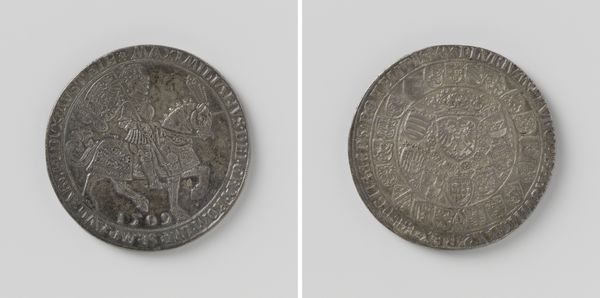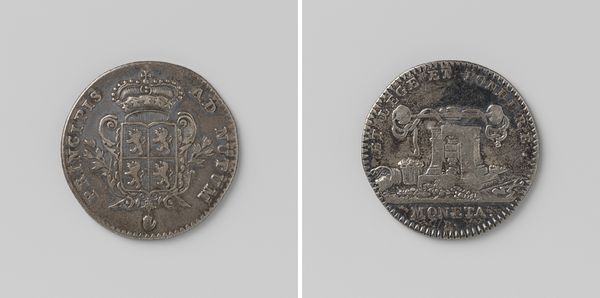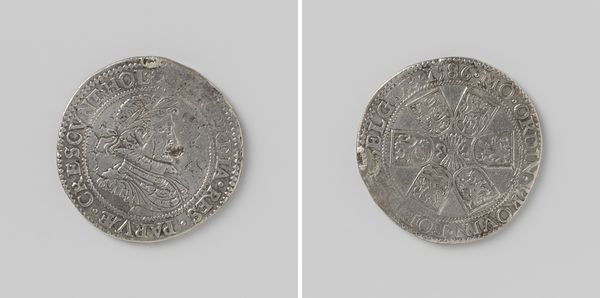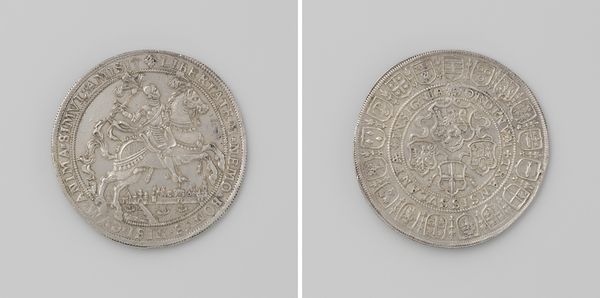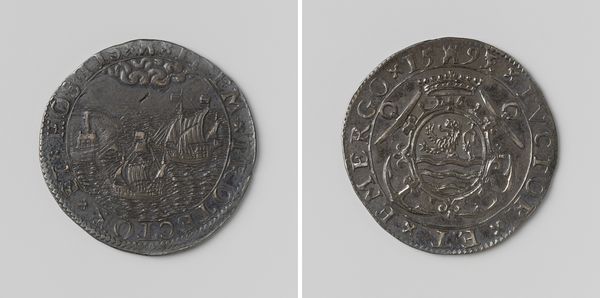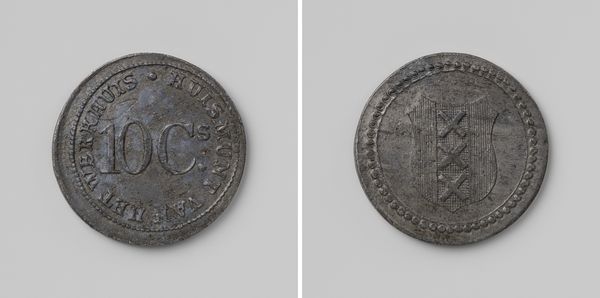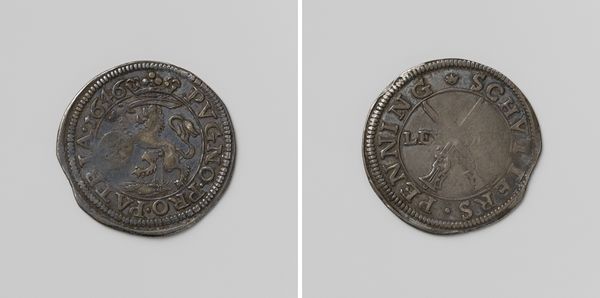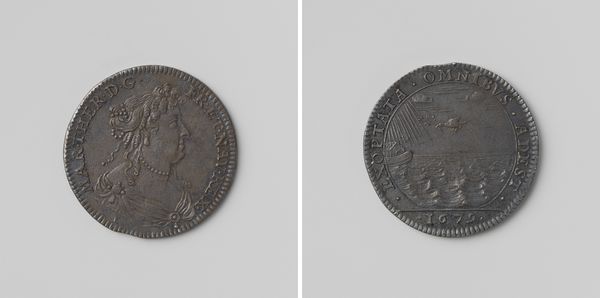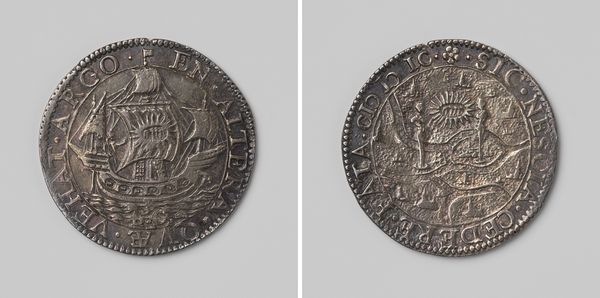
Overwinning op de Turken in de slag bij Lepanto, penning geslagen op last van de stad Utrecht 1571
0:00
0:00
metal, sculpture, engraving
#
narrative-art
#
metal
#
11_renaissance
#
geometric
#
sculpture
#
history-painting
#
engraving
Dimensions: diameter 4.9 cm, weight 61.41 gr
Copyright: Rijks Museum: Open Domain
This silver Utrecht medal, made by Cornelis van Eyck, commemorates the victory over the Turks at the Battle of Lepanto. Its circular form immediately brings to mind notions of wholeness and continuity, which belies the fractured history it represents. Note how the composition of the medal's front side is dominated by an equestrian figure above a cityscape. This positioning creates a visual hierarchy, suggesting power and dominion. But look at the reverse: two crossed staffs disrupt any clear narrative, obscuring any singular interpretation of victory. The medal engages with the semiotic tradition of encoding messages through symbols. The cityscape, the equestrian figure, and the crossed staffs are all signs pointing to complex cultural and political meanings. However, these signs are not fixed; they are open to interpretation. The medal's form and imagery function as a cultural artifact, reflecting not just a historical event, but also the complex interplay of power, representation, and interpretation.
Comments
No comments
Be the first to comment and join the conversation on the ultimate creative platform.
